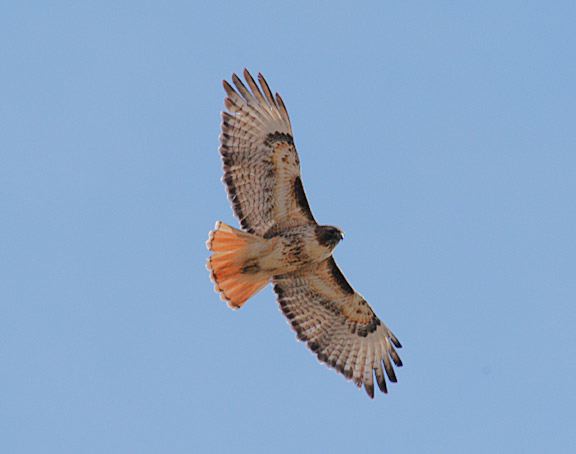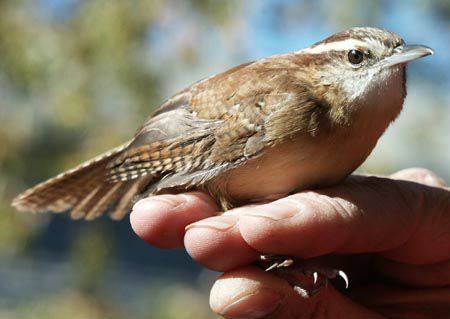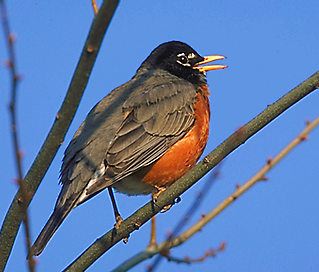Mountain Hawks and Migrations on Lehigh Campus
 Red-Tailed Hawk Buteo jamaicenses (Accipitridae) |
In between classes hundreds of students roam Lehigh's campus. How many of these students would notice a Red-Tailed Hawk overhead (above picture)? In my experience... not many. People are fascinated by nature, yet often blind to the array of wildlife around them every day. Over 300 species of birds have been documented in the Lehigh Valley alone, and on a spring day seeing dozens of species on campus is not uncommon. All that is required to find these birds is an awareness of them.
 Carolina Wren Thryothorus ludovicianus (Troglodytidae) |
Awareness of birds also has many personal gains associated with it. For one, learning to find and identify birds can simply be fun. Bird watching or "birding" is the fastest growing and second largest hobby in America. Trying to find a species you have never seen before, or to get a great view of your favorite bird makes "birding" feel almost like a treasure hunt. Identifying birds also requires an eye for detail. Learning to distinguish separate species sharpens your observational skills and gives a deeper appreciation to the beauty of these animals. What might initially be dismissed as a plain looking bird is often full of intricate details upon closer examination (see the Carolina Wren left). Furthermore, watching birds is a great starting point to appreciation of nature in general. Observing where a bird is found, what they are eating, or what type of trees they frequent, will over time give an appreciation of the complex interrelations of the ecosystem. |
What is the benefit to noticing birds? From a scientific standpoint, noticing where birds are (and at what time) helps to understand status of a species. If we notice that the number of House Finches at our feeders has been cut in half from one year to the next, there may be a problem with these birds. House Finches have indeed declined over the past few years due to a form of conjunctivitis which has hurt populations. If people are not aware of the birds around them these problems may go unnoticed. Birds can also be bioindicators of the status of the ecosystem in general. Noticing a decline in fish eating birds may reveal a problem with water quality for example. Since many of these problems are small scale, noticing the abundance of birds in your neighborhood, campus, or even backyard gives clues to the health of the surrounding ecosystem.
| Paying attention to birds also opens your eyes to the extensive seasonal fluctuation that exists due to bird migration. Bird migration is one of natures most widespread and impressive phenomena, and several of the birds to be found around campus are extensive migrants. When an American Robin (right) has returned to Lehigh's campus in the spring, for example, it has probably just completed a cross country trek that may have originated from the southernmost tips of the United States. |  American Robin Turdus migratorius (Turdidae) |
This web site seeks to give a starting resource for the those people on Lehigh Campus who are curious about the birds to be found on campus at Lehigh University. It was put together by the LEO student interns. Other, more extensive resources can be found in the links page. The bird guide is a very basic guide to the birds found on Lehigh's campus. They are the most common species to be found on the Lehigh campus. The birds listed are just a practical starting point. Birds, by their very nature, travel widely and can be found far out of their range. Also remember that sound is often as important (if not more important) than sight for identifying birds (and appreciating them) so be sure to click on the sound clips when viewing the bird guide.